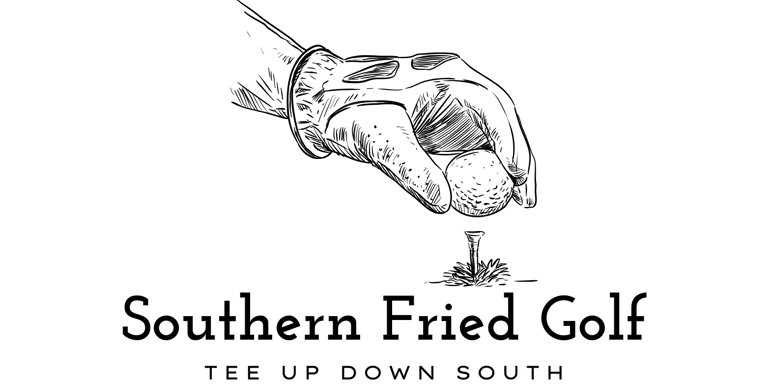Hole Them All: Penick on Short Putts, Skill Building, and Letting Kids Be Kids
In this kickoff companion to "The Little Red Video" series, Steven Bradley—Chief Golf Officer at Southern Swing Studio and graduate student at Keiser University—reflects on the timeless wisdom of Harvey Penick’s “Hole Them All” and what it reveals about short putts, skill development, and youth coaching. Blending personal narrative, academic insight, and a real-time class dialogue with Professor Brad Turner, this post explores why letting kids earn the game is more powerful than giving them shortcuts. Whether you’re a coach, parent, or lifelong learner, this post offers powerful reminders about how great golfers—and great people—are built. Tags: Harvey Penick, Junior Golf, Golf Coaching, Short Putts, Golf Instruction, Keiser University, Youth Development, Golf Philosophy, Southern Swing Studio, BBFA
HARVEY PENICK'S LITTLE RED REELSCOLLEGE OF GOLFBBFA
Steven Bradley
4/16/20255 min read


By Steven Bradley
Chief Golf Officer, Southern Swing Studio; Graduate/Professional Student (M.S.), Golf Teaching and Learning – Keiser University College of Golf; Certified Professional Golf Coach, USGTF
When I was an adolescent in the rural Deep South in the 1990s—before MySpace and AOL chat rooms, let alone Instagram and TikTok—trying to learn a game that the great Arnold Palmer once called “deceptively simple and endlessly complicated,” the only real textbook I had was Harvey Penick’s Little Red Book. I have no idea how I got my hands on a copy, but I did—and looking back, that feels like a lucky break. It was the most honest piece of golf instruction I’d ever read.
Penick had a way of delivering truth with kindness, clarity, and zero need for validation. No jargon. No pretense. Just a teacher who truly loved the game, jotting down insights with the care of someone who knew they might outlive him. And they have.
As a multi-sport youth coach, certified golf instructor, and lifelong writer, I’ve developed a teaching philosophy rooted in that same spirit: simplicity, joy, and truth. My journey started with a neighbor who gave me my first clubs—a moment that changed everything for a single mom’s only child on a dead-end street.
My dad, may he rest in peace, was the worst swing model imaginable. I say that with affection, but also with protective instincts: no child should have to watch that motion too often for fear of visual contagion. So I became a student of books. I read The Little Red Book and Golf My Way, and taught myself how to strike a ball by trial, error, and obsession. By high school, I was playing in college tournaments I technically wasn’t allowed to enter. It was the '90s—rules weren’t as sacred then.
After a long career in journalism and marketing, I found myself pulled back into golf through coaching. It started with youth soccer, where I coached my daughters. I saw how simple feedback, joy, and rhythm created real growth. From there, Southern Swing Studio was born. Now, through Bradley’s Ball Flight Academy, I blend classic instruction with modern athletic development, writing, and a return to what Penick always understood: kids need truth, not tricks.
Junior Makes His First Birdie?
This week in my SPM550 class, “Teaching the Young Golfer,” with Professor Brad Turner at Keiser University’s College of Golf, I mentioned one of Penick's simplest yet most profound stories. The chapter is called “Hole Them All.”
Two proud parents came to me at the club and announced that their young son had just scored his first birdie.
I agreed that was a wonderful event and asked them how long was the putt Junior made for the birdie.
The parents said the putt was only two feet long, so they gave Junior a "gimme" to assure his first birdie.
"I've got bad news for you," I said. "Junior still hasn't made his first birdie."
Not only did Junior not sink the birdie putt, it was now planted in his mind that he could pick up his ball two feet from the hole and pronounce the putt as made, not having to face the moment of truth.
When Junior reaches a higher level of play, where there are no "gimmes," he may develop an anxiety about short putts that will bother him the rest of his life.
My rule is that a youngster, no matter how small, should be required to hole every putt.
If Junior grows up knowing he has to make all the short ones, that will automatically become part of his game. When he plays on higher levels and faces a two-footer to win an important match, he'll be ready.
This may be the perfect example of skill-based trauma disguised as kindness. A gimme is an illusion. Worse: it’s an early betrayal.
If you’re a coach, a parent, or a teacher, don’t steal the game from a child by trying to make it easier. Help them earn joy. That’s what Penick did.
The Best Lessons Come From Dirt
In that same class, I shared my own origin story. I didn’t grow up with a country club membership. I couldn’t drive to the course. So I grabbed a shag bag and walked up to a patch of uneven land beside the middle school.
That field became my range. I picked a rock in the distance and hit balls toward it, knowing I’d have to fetch every one that missed. That meant accuracy mattered. Distance control mattered. And since it wasn’t exactly Augusta National, I had to learn to make clean contact off any lie. It made me a ball striker, not just a swinger.
After I shared this, Professor Turner offered one of those comments that sticks with you:
"You don’t need a perfect facility to build a great golfer. You just need a golfer."
He talked about his own early training behind a barn: hitting balls off awful grass, learning to make pure contact without feedback tools. Brad mentioned that when kids train on mats, it hides the feedback. They can pick the ball clean without ever learning the low point of their swing. On the course, that disconnect shows up fast.
He told me about contests they used to do in college: hitting off the first groove, second groove, third, or making a full swing and just barely brushing the top of the ball to see who could hit it the shortest. Building that kind of touch creates control, and control builds confidence.
I told him it reminded me of boxing. We use string drills to practice full-speed punches that graze the target in boxing. You learn your range and precision through contact that isn’t always visible to the crowd. It’s the same with a wedge or a putter.
It’s a feel thing. And that feeling starts young—or it doesn’t start at all.
The Penick Philosophy on Kids
Harvey had a way of writing truths that were immune to time. Here’s a piece of his advice on kids from a chapter called “Starting Young”:
"The best age to start a child in golf is the time he or she becomes interested in the game.
Don’t be too exacting on the grip or anything else. Just let the kids use their natural ability. Hands together.
Be sure the club you give them has plenty of loft... and make sure it’s light enough.
Worst of all is when I see Dad, on the range or the course, constantly nagging the child to keep his head down, keep his left arm straight, stare at the ball—bad information, all of it.
This may be fun for Dad, but it is hurting the child’s development."
Golf should feel like play. Like discovery. Like joy. If your child becomes great, it will be because they want to hit balls. Not because you signed them up for a tour.
Penick believed in freedom, feel, and feedback. And whether we’re working with 5-year-olds or 55-year-olds, those principles still work.
I started this academy to give kids something I never had: a guide. Not someone telling them what to do, but someone showing them how to learn.
Because if you can learn how to learn, you can hole them all.



